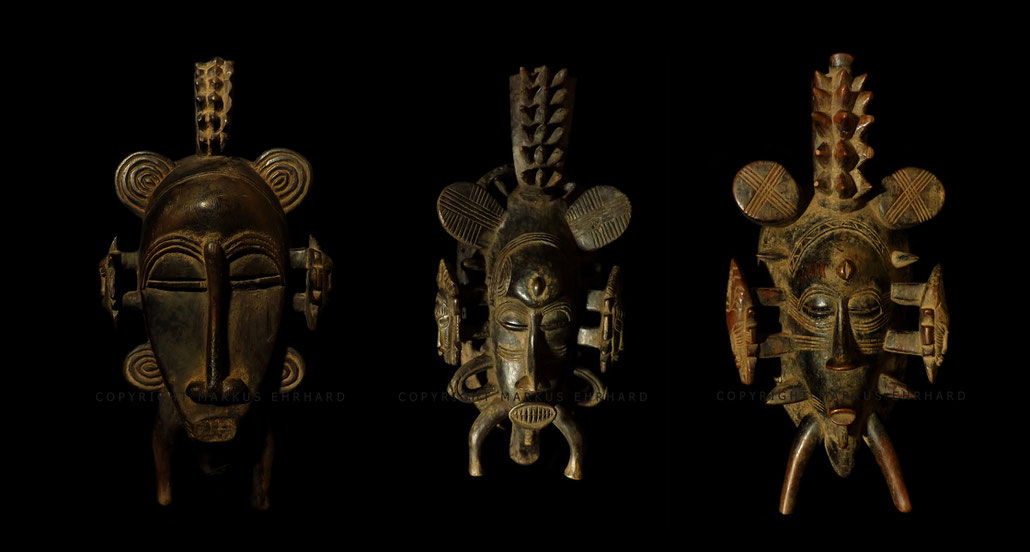
First it is important to distinguish, who is allowed to see the dance of the Kpelié mask: The Senufo diversify between a mask, that can be seen by everyone living in the place or only by the members of the Poro, the secret society of men. The distinction depends on the social gathering. The Kpelié can be danced at an event where the birth of twins is getting celebrated, at a harvest festival or on a funeral. Everytime the Kpelié represents a male, never a female, spirit. In some books you can read, that this mask does show an ancestor, but that is not confirmed.
The most common mask is the Kpelié with the Capok fruit on top, which is the symbol of the occupational group of the Koulé. It can not be said, that certain center top features are for special celebrations only. In some books it is written, that a mask with the Capok fruit on top only dances on a funeral of a Koulé. That might be the case, but masks with that symbol also dance on other events like on harvest festival.
The above shown mask on the right from Zié Soro, Koulé from Djemtene, did dance on funerals or on celebrations at the Poro. Only men of that secret society were alowed to see that mask. This classic Kpelié does also have features like the two smaller Kpelié masks and typical geometric decorations at both sides. Zié told me in an interview, that he carved this mask 25 ago for the Poro of Djemtene. And that the two smaller faces are symbol for a mask of his occupational group and of the Koulé of his generation.
The Kpelié in the middle is carved by Ziehouo Coulibaly, Koulé from Korhogo and shows the same features like the mask from Zié Soro and as same as from the mask made by an unknown carver from the region of Korhogo.
Left: Kpelié mask, carved by an unknown carver for the Poro, region of Korhogo.
32,0 x 15,5x 8,0 cm, wood.
Literature:
- Wenn Urform Form bestimmt, Markus Ehrhard, pages 102 - 103.
Middle: Kpelié mask, carved by Ziehouo Coulibaly, Koulé from Korhogo, for the Poro.
28,5 x 13,0 x 7,5 cm, wood.
Literature:
- Wenn Neuordnung Ordnung schafft, Markus Ehrhard, pages 174 - 175.
Right: Kpelié mask for the Poro, carved by Zié Soro, Djemtene. Date of origin around 1990.
32,5 x 15,0 x 7,5 cm, wood.
Literature:
- Wenn Neuordnung Ordnung schafft, Markus Ehrhard, page 160 - 164.
Copyright content and images by Markus Ehrhard

